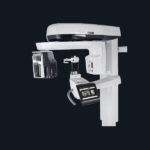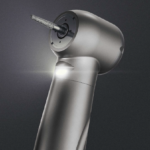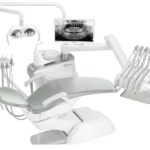
There are different types of injections a doctor can choose to administer and one of them is Intravenous Injection or IV injection.
An intravenous, IV injection is an injection of medication or another substance into the veins.
Moreover, it goes directly into the bloodstream.
It is one of the fastest ways to get a drug into the body of a patient.
IV administration involves a single injection followed by the insertion of a thin tube into the vein of the patient.
This allows a health care professional to administer multiple doses of medication or medicated infusions without having to re-inject needles to deliver each dose.
Keep on reading to learn more about what health professionals use IV injections for, how IV injections work, and the equipment they need.
Also, what are some of the pros and cons of intravenous injections as well as some possible risks and side effects?
Uses of Intravenous Injections
Intravenous injections or IV injections are one of the quickest and most controlled ways to deliver medications or other substances into the body of the patient.

A healthcare professional can administer an IV injection in the following situations:
- when a patient needs potentially life-saving medications very quickly
- the patient needs an accurate dose of medication
- patient needs a larger dose of medication over an extended period of time
- in case taking medication by mouth would be impractical or ineffective
- in case a patient would otherwise need multiple injections like when receiving treatments for some chronic condition
Learn more about Intramuscular Injection: Location and Administration here.
Equipements for Intravenous Injections
The equipment that any medical health care facility will need for an IV injection can vary according to several factors.
These include:
- the type of medication that the patient needs
- whether the patient requires medication rapidly or over an extended period of time
- how long the patient will need the IV for
Moreover, depending on the above factors, important or necessary equipment may include the following:
- a tourniquet to help the healthcare professional identify a suitable vein
- local anesthesia to numb the injection site
- a needle for initial injection and a catheter tube to keep the vein open
- an access cap that that doctor or healthcare professional can open when administrating medications and close when not in use
- syringe for administrating the medication into the catheter, IV bags, and lines for delivering infusion
- gauze, bandage, and medical tape to help protect the injection site
- imaging machines, like X-ray or ultrasound machines to make sure that a central line is in place
How it Work?
A healthcare professional can deliver IV drugs or other substances through a peripheral line or a central line.
Let’s learn more about each in detail:
Peripheral Line
A peripheral line or a peripheral venous catheter is a common form of IV injection.
It is suitable for short-term intravenous treatments.
When placing a peripheral IV line, a medical health care professional will:
First, inject the needle into the vein of the patient, and push a small plastic catheter over the needle and into the vein.
Then they will remove the needle, leave the catheter in place, and place an access cap over the catheter.
This allows the healthcare professional to administer medications without having to re-inject a needle.
Moreover, a peripheral line can be useful for both rapid injections and time-based infusions.
Rapid IV injections: These involve inserting a dose of a drug directly into the bloodstream of the patient.
Furthermore, healthcare professionals can also refer to a rapid injection as a push or a bolus.
Time-based IV Infusions: These involve delivering medication into the bloodstream of the patient gradually over time.
This method involves administering medications through an IV line that is attached to the catheter.
Moreover, there are two main delivery methods for IV infusions: Drip infusions and pump infusions.

Drip infusions use gravity to deliver a steady supply of an infusion over time. With these, the healthcare professional must suspend an IV bag above the patient receiving treatment.
Thus, ensuring that gravity draws the infusion down through the line and into the vein.
On the other hand, pump infusions involve attaching a pump to the fusion and this pump delivers the infusion into the bloodstream in a controlled and steady manner.
Centra Lines
A central line or a central venous catheter, access a more central vein within the torso like the vena cava.
Moreover, the vena cava is a large vein that carries back blood to the heart. A healthcare professional will use an X-ray to determine the ideal placement of the line.
It is important to note that there are four types of central lines:
- Percutaneous central venous catheter: a healthcare professional will insert the catheter directly through the skin to reach the internal or external jugular, subclavian vein, or femoral vein
- Peripherally inserted central catheter, PICC: PICC line involves inserting a catheter from a peripheral vein on the outer body and carefully feeding it toward the heart of the patient
- Tunneled Line: This involves inserting a needle under the skin of the patient and feeding it a significant distance before penetrating the central vein
- Port: A port is a small reservoir covered in silicone, and a healthcare professional will implant the port under the skin of the arm or chest where it will feed into the central vein, and then inject each dose of medication through the skin and into the reservoir.
Sites for Intravenous Injections
Common sites of short-term IV lines are forearm locations like the wrist or elbow, or the back of the hand.
While in some situation may need the healthcare professional using the outer surface of the foot.

However, in very urgent situations, healthcare professionals may decide to use other injection sites like the vein in the neck.
Central lines, in general cases, feed into the superior vena cava.
But the initial injection site, in most cases, will be in the chest or arm.
Pros and Cons of Intravenous Injections
Let’s learn about the pros and cons of IV injections as follows:
Direct IV injections
A direct IV injection or IV push involves a healthcare professional injecting a therapeutic dose of medication or another substance directly into the vein of the patient.
The benefit of this type is that it helps to deliver the necessary dose of a drug very quickly, which in turn, helps to take effect rapidly as possible.
However, the drawback of a direct IV injection is that receiving larger doses of medication can increase the risk of sustaining damage to the vein.
Moreover, this risk can be higher if the drug is a known irritant.
Direct IV injections also do not allow a healthcare professional to deliver a large dose of the drug over an extended period of time.

Infusions
An infusion involves delivering medical infusions through an iV line that is attached to a catheter.
The benefits of an IV infusion are:
- ability to control the dose and delivery speed
- ability to deliver larger doses over time
- the drug will remain in the system over a longer period of time
However, the drawback of this type is that it does not allow for a larger dose of medication to enter the body at once.
This means that the therapeutic effects of the drug may take time to appear and for this reason, an IV infusion or IV therapy may not be an appropriate method when a patient needs medication urgently.
Possible Risks and Side Effects
Risks and side effects from intravenous injections are not uncommon.
It is an invasive procedure and the vein of the body are delicate.
According to a study, up to 50% of peripheral IVcatheter procedures fail while central lines also pose problems.
The following outlines some potential risks and side effects of IV injections:
Inflammation
One of the most common complications of intravenous injections or IV injections is inflammation of the vein or phlebitis.
Research in the Journal of Vascular Access notes that phlebitis occurs in up to 31% of people using IV catheters during infusions.
Moreover, the symptoms are typically manageable, with only 4% of people developing severe symptoms.
Drug Irritation
It is important to note that the direct injection of a drug into a peripheral vein can cause irritation and inflammation in the surrounding tissues.
This irritation can be due to the pH of the drug or other irritating ingredients that the drug may contain.
However, some possible symptoms of drug irritation are:
- swelling
- flushing
- discoloration
- pain at the injection site
Bruising
Sustaining damage to a vein can cause blood to leak out of the vein, resulting in bruising at the injection site.
Drug Extravasation
Drug extravasation is a medical term for when an injected medication leaks out of a blood vessel and infuses into the surrounding tissues.
Moreover, this causes symptoms like pain, tissue damage or necrosis, and scarring.
Infection
In some cases, bacteria from the surface of the skin can get into the catheter line and cause infection.
Central Line Issue
Central lines do not carry the same risks as peripheral lines, though they do not carry some risks.
Some potential risks of central lines are infection, blockages, and blood clots.
Also, the central line may stop working or start to come out and if the patient suspects that there may be complications with the central line, they should seek medical attention or notify the doctor.
Final Thoughts
Intravenous injections and IV injections are quick, controlled ways to deliver medications directly into the bloodstream of the patient. The type and method I IV injection depends on several factors.
However, it is important to note that IV injections do pose some risks like pain, irritation, and bruising, While more severe risks are infections and blood clots. A patient should discuss the potential risks and complications of IV injections before receiving treatment in this way.




